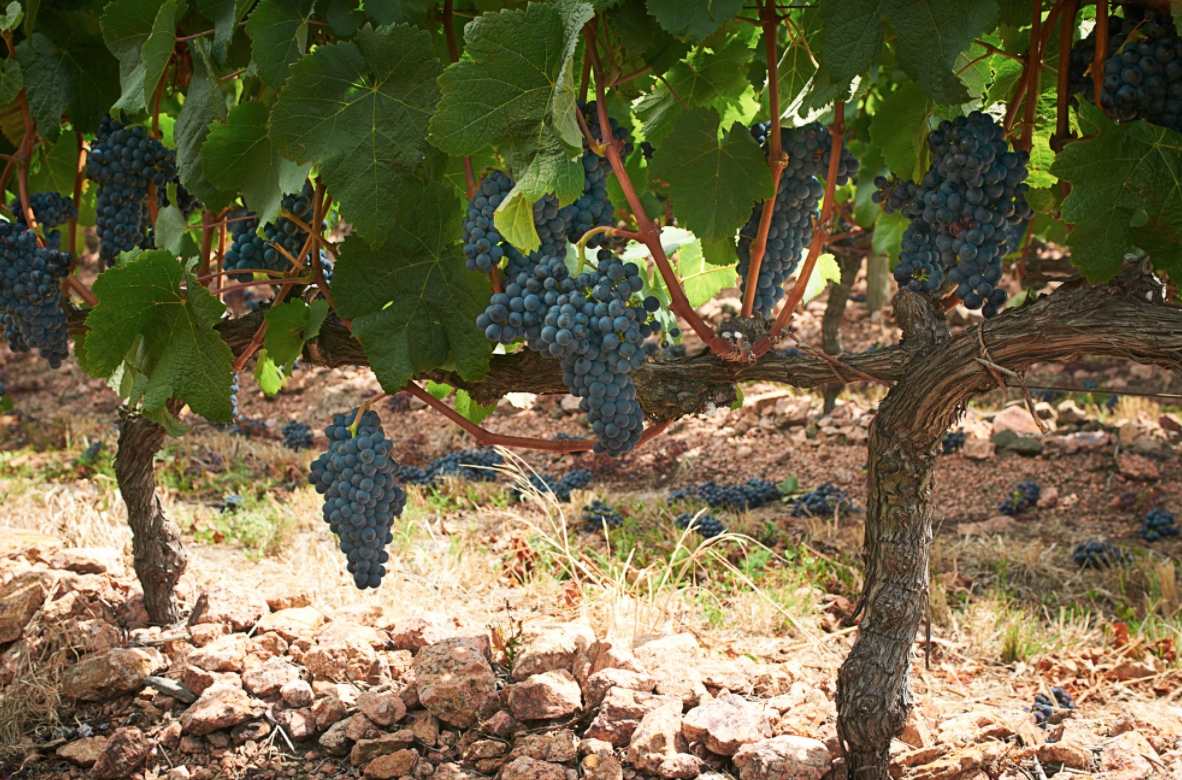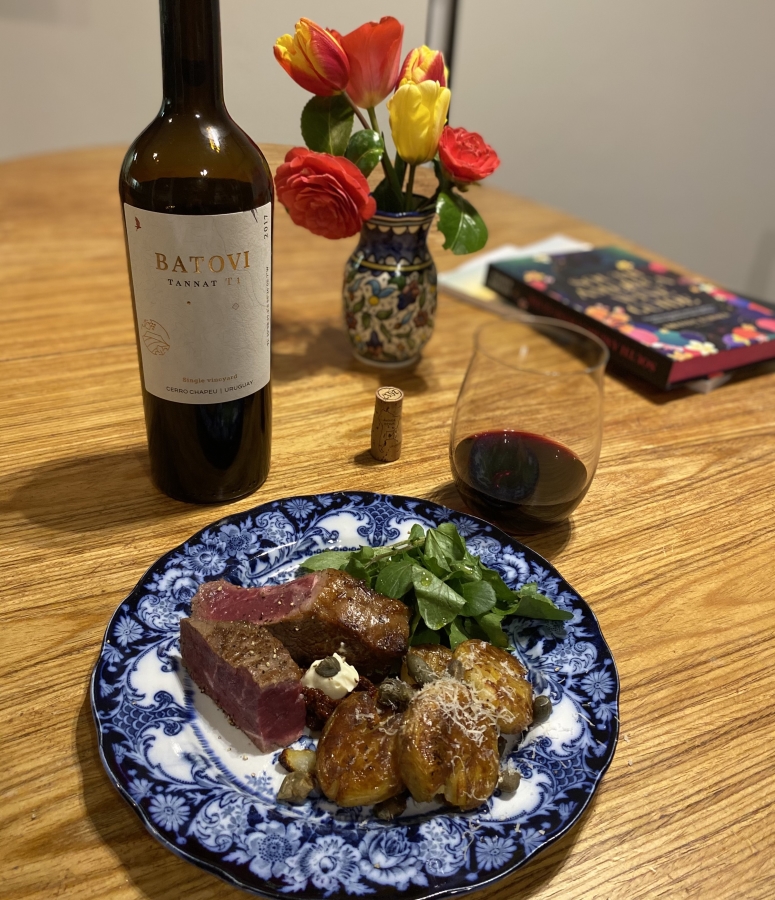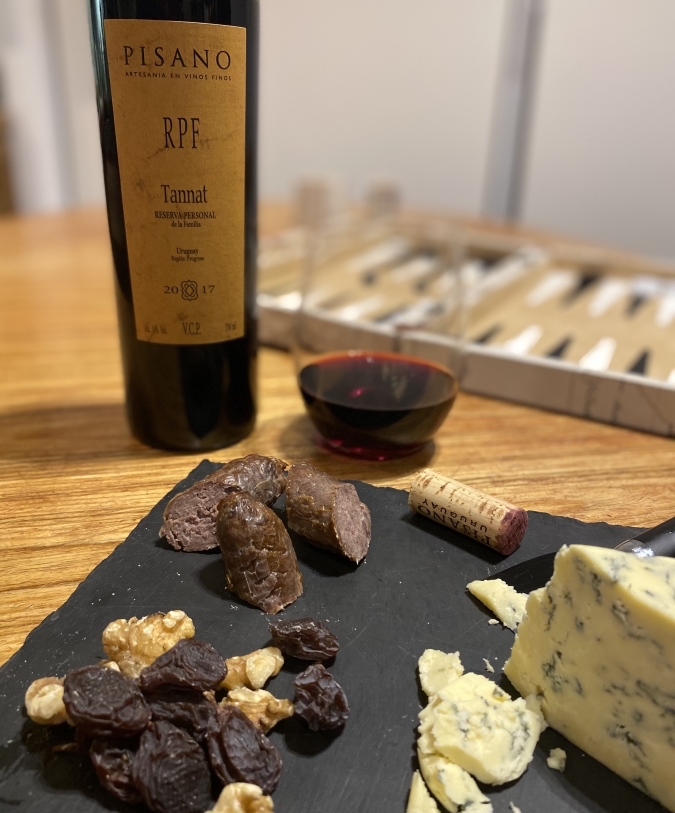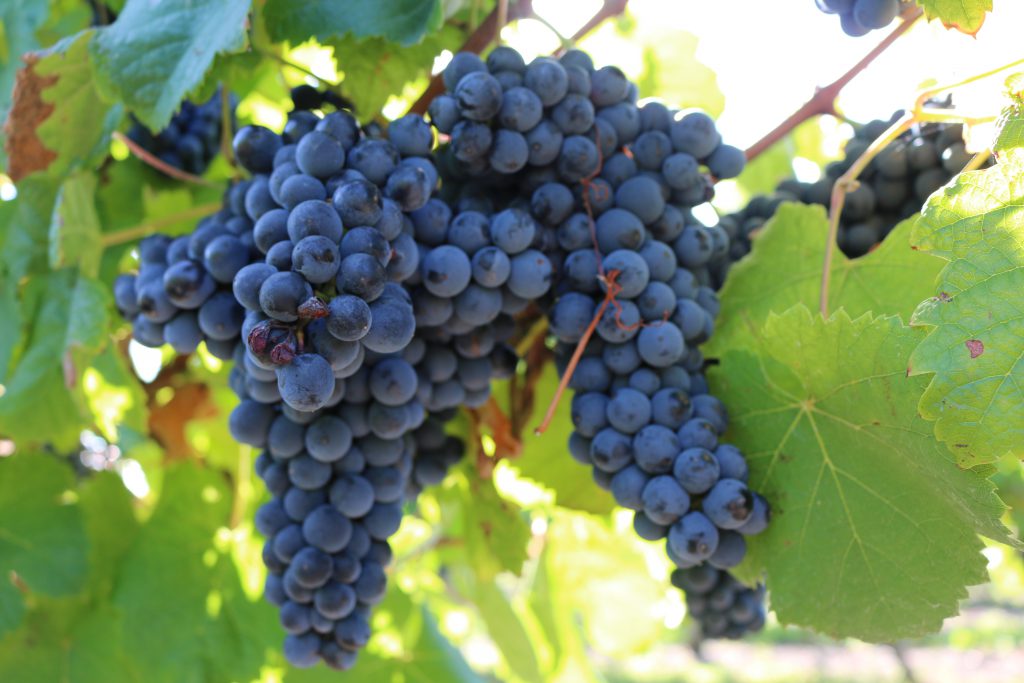Tannat is the champion grape variety of Uruguayan wine, but how did this red variety become the most planted in Uruguay? In our Tannat guide we explore the history of Tannat in Uruguay, what Tannat tastes like, and where it best grows.
Tannat Guide
Tannat by Terroir
Tasting Uruguayan Tannat
Tannat Wine Pairings
Tannat Guide: Key Uruguayan Tannat facts
Hectares planted of Tannat in Uruguay
1,610 hectares
Key Tannat wine descriptors
Deep violet colour. Black plums, raspberries, liquorice & spice aromas. Dry, mouthwatering acidity (medium + ), grippy tannins (high) and full body.
Tannat winemaking styles
Traditionally Tannat was given a long extraction with at least a year’s barrel ageing and another year in bottle, but modern styles use gentle maceration techniques and some have no oak influence at all. Usually 13-14%
Tannat found a natural affinity with the Uruguayan climate and with over 1,600 hectares dedicated to the variety around Uruguay’s different wine regions, there’s a huge diversity of styles of Tannat to discover. Although Tannat originates in South West France, it has unquestionably made Uruguay its home — and, with some of the best single-variety Tannat wines in the world, Uruguay has mastered Tannat.
It was no coincidence that of all the vinifera varieties, it is Tannat that has emerged as Uruguay’s champion. “We didn’t choose Tannat, Tannat chose us!” is the simple explanation from winemaker Reinaldo de Lucca. The thick skins of this variety originally from the Basque region of France are resistant to the humid conditions and hardier to changes in vintage, delivering good quality wines year on year — suiting Uruguay’s changeable coastal climate down to a tee.
Tannat’s resistant nature — able to handle heavy rain and drought, while always delivering acidity, colour and aroma — meant it survived throughout the 20th century, always adding value to a grower’s vineyard, even alongside the busty hybrid varieties that were popular throughout much of the 20th century. It has remained a staple in Uruguay’s vineyards ever since Pascual Harraigue first introduced it to the country in the 1870s (and is still often called Harriague after its pioneer).
When Uruguay converted to quality wine production from the 1970s onwards, international consultants and flying winemakers were quick to advise the wineries to keep their Tannat vines and make it the champion of Uruguay. According to flying winemaker from New Zealand Duncan Killiner, who started consulting in Uruguay in 1996:
Tannat’s always been the star of Uruguay. The variety just works really well there, and performs well in all of the regions every vintage.”
Modern Tannat styles vs. Traditional Tannat styles
Tannat isn’t only a historical variety for Uruguay, it is also the most planted new variety (accounting for 28% of new vineyards under 5 years old), while also claiming the second greatest number of oldest vines (accounting for 17% of Uruguay’s vineyards over 50 years old).
There’s no doubt Tannat is key to both Uruguay’s past and future, and there’s been no lack of innovation with this traditional variety in recent years. We can split the Tannat school into traditional and modern per se:
TRADITIONAL TANNAT STYLE
The traditional Tannat style in Uruguay is quite a heavily extracted red wine which has a high tannin content, deep (almost black) colour and is full-bodied, requiring several years of ageing before being approachable enough to drink. These Tannat wines are often aged in oak barrel too, and although you’ll need patience to open them at the right time, they can also age fantastically well. I’ve tried some old Tannat wines from the 70s and 80s which still show youthful acidity, a spine of tannin and plenty of concentration.
MODERN TANNAT STYLE
The modern school of Uruguayan Tannat is focused on a more youthful style with much lighter extraction (and ergo less tannin, although nonetheless Tannat always has a high level of tannins), juicier fruit and will often be released just a year or two after vintage — quite often without any oak ageing whatsoever. This is quite a modern, vibrant and refreshing style, and shows Uruguay’s affinity for the variety and mastery of what is elsewhere known as a challenging grape to work with. Included within these modern interpretations are rosé wines and even a sparkling red Tannat. There are plenty of these youthful and modern expressions of Tannat produced in all the traditional wine regions, but unoaked Tannat seems to work particularly well in the free-draining granite soils of coastal Maldonado.
The most exciting development in Uruguayan Tannat in the past couple of years is how producers are using it as a vehicle for expressing their expanding terroir and different vineyard sites. Deicas and Bouza are a couple of producers who make Tannat in very different sites in order to show the potential for this variety to express itself differently in Uruguay’s different terroirs — from the schist hills of Mahoma to the gneiss slopes of Pan de Azúcar.
Tannat is Uruguay’s heavyweight champion not because of its reputation as a ‘big’ wine today but because of its consistently powerful, energetic and dazzling performance in the ring.
Want to explore further into Tannat
and Uruguayan wine?
ORDER YOUR COPY of The South America Wine Guide now!
Or get the Uruguay Wine Guide e-book!
Tannat by terroir – the different Tannat expressions in Uruguayan wine regions

There are a host of regional expressions of Tannat. Here are the most classic and distinctive regional expressions in my opinion.
Tannat from Canelones
Typically less showy in aromas but with deep concentration and structure. Firm tannins and intense colour, with dark fruit and a savoury, mineral expression — this is classic Uruguayan Tannat. Las Violetas is the grand cru of Canelones, where these firm wines become elegant and the tannins finer and more filigree after years in bottle.
Tannat from Maldonado
Bright, fresh red and black fruit aromas with spicy but fine tannins. An energetic style of Tannat, typically from the modern school of winemaking.
Tannat from Colonia
Firm Tannat wines, typically more voluminous in style and warming in alcohol.
Tannat from Sierra de Mahoma
Tannat from this schist outcrop tends to be meatier with bloody notes and grippy tannins.
Tannat from Rivera, Salto & Durazno
Typically fleshier fruit and riper tannins with spice and red berry aromas.
Tasting Uruguayan Tannat: A wine taste tour!

For a tantalising Tannat-tasting journey, try some of these wines to explore the diverse styles being made in Uruguay today.
The modern school of Tannat wines
Start with some of the unoaked, modern Tannat wines of Pizzorno, Antigua Bodega Uruguay,Viña Edén, Brisas del Este, Bracco Bosca, Bodega Oceánica José Ignacio, Bodega Garzón and Cerro del Toro.
Traditional Tannat wines
Move onto some of the well-aged, icon wines of Bouza, Cerro Chapeu, Marichal, Familia Deicas, Pisano, Spinoglio and Viña Progreso. Traditional is by no means boring! These are elegant, long-lasting wines using oak ageing as an integral part of the wine’s identity.
Tannat wine blends
Try out some of the unique Tannat blends on offer with Alto de la Ballena’s blend with Viognier; Artesana’s blend with Zinfandel; Campotinto’s blend with Cabernet Franc; Hacienda del Sacramento’s blend with Merlot; El Capricho’s blend with Tempranillo and Cabernet Sauvignon; and H. Stagnari’s blend with Petit Verdot and Marselan.
Sparkling Tannat wine
Take a detour over to Tannat bubbly with Pisano’s red sparkling Tannat wine, Río de los Pájaros.
Pink (rosé) Tannat wines
Move into a rosier vision with the Tannat rosé wines of Narbona and Piccolo Banfi.
Sweet Tannat dessert wines
Indulge in late harvest and liquor Tannat wines with Familia Deicas, Montes Toscanini,Pisano and Pablo Fallabrino.
CLICK HERE to download the Uruguay Wine Guide Map and learn where these wineries are located!
Tannat Wine Pairings
There are so many excellent wine pairings for Tannat wines and it really depends on the individual producer and wine as to what dishes will pair best.
Meat wine pairings with Tannat
Lamb and beef are seen as the holy grail of Tannat wine pairings in Uruguay, but pork can also offer excellent results. These meat pairings typically work best with the more traditional styles of Tannat.
-
Tannat paired with lamb
A spitroast lamb with its rich, earthy flavours, juicy fat and some depth of smokey flavours from cooking over the fire works wonderfully with the complexity of Tannat, which is rich in acidity, tannins and flavour and can pull off even the most complex lamb dishes.
Uruguay, in fact, has a whole festival dedicated to Tannat and lamb pairings! The month of June is a month-long festival, the Festival de Tannat y cordero!
-
Beef & steak paired with Tannat
In a country where cows outnumber people three to one, it’s no surprise that Uruguayans love their steak! And so beef is naturally one of the best pairings for Tannat, culturally and in flavour. Barbequed beef, carne asada, is a classic, as is a steak and Tannat, served with homemade chimichurri of course!
-
Tannat and pork wine pairings
The richness of pork also partners well with the tannins, acidity and intense flavour of Tannat and slow cooked pork is ideal. Whether you are aiming for pulled pork, or perhaps roast pork belly, or pork in a feijoada – there are lots of pork wine pairing options to explore. Sausages and Tannat are also a favourite, especially the local choripan!

Vegetarian wine pairings with Tannat
You don’t have to pair meat with your Tannat wines, there are also plenty of vegetarian or vegan wine pairing options to explore. Stuffed mushrooms (with or without the cheese melted on top!) is a classic Tannat pairing, and in Uruguay Tannat is commonly paired with pasta dishes – carbonara (minus the bacon for vegetarians!) or a rich tomato sauce are classics. The modern school of Tannat wines works really well with lighter vegetarian or vegan dishes.
Tannat is also great on a cheese board with blue cheese in particular, and pairs nicely with dates, raisins and nuts. You could also try one of the many Tannat dessert wines for this pairing!
Tannat Day
To celebrate Tannat in Uruguay, international Tannat Day is celebrated on 14th April. The day marks the day that Pascual Harraigue passed away, on 14th April 1894, and remembers his lasting legacy in Uruguay.
Tannat Day, and Tannat Week, has been held since the declaration from the National Viticulture Institute in Uruguay in 2016.
Read more on Uruguayan wine

